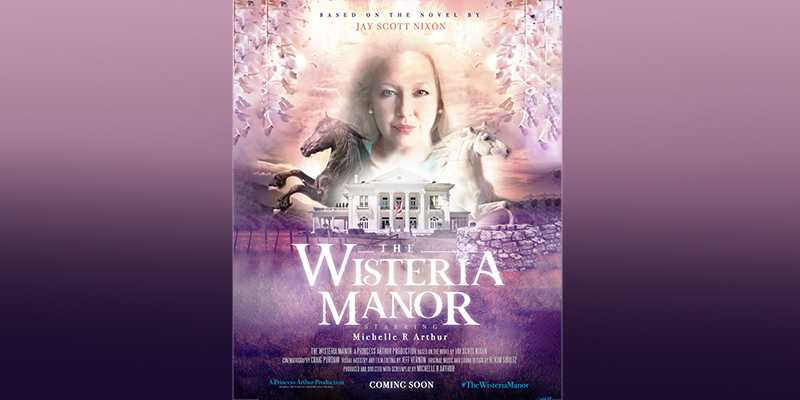The Wisteria Manor

CAT INDEX
CAT INDEX OVERVIEW
SCREENPLAY
MAKING
ACTING
Michelle Arthur's The Wisteria Manor is an experimental film that invites viewers into a world of surrealism and haunting beauty. This experimental feature film, executed in a unique blend of animation and live-action, delves into themes of isolation, memory, and the supernatural. The film stands out for its rich atmospheric details and emotional depth, set in an eerie, dilapidated mansion. Michelle's direction shines in crafting a slow-burn narrative that builds suspense while exploring the psychological aspects of grief and loss.
A family in Ohio, during the year 1851, is haunted by dark secrets that have been kept hidden for a long time. Sometimes, it seems like spirits can return to the world, and this 53-minute experimental story explores the possibility of one such occurrence. The story craftily touches the Horror and Romantic genres.
The strength of the film lies in its ability to evoke a sense of unease and wonder without relying on traditional horror tropes. Arthur's use of slow-motion sequences, dreamlike imagery, and a haunting soundtrack creates a palpable atmosphere of dread. The narrative, while sparse, is rich in symbolism and invites interpretation. The Wisteria Manor itself becomes a character, its creaking floors and whispering winds hinting at a dark history.
Arthur, in an interview, shared that her goal was to create a visual piece that resonates emotionally, which she achieves through carefully curated settings and the emotional vulnerability of her characters. The film's artistic choices—particularly its use of lighting and sound design—heighten the sense of isolation, giving the audience an immersive experience. Michelle’s interview further reveals her creative process, where she emphasizes the importance of collaboration in her filmmaking approach. She draws on inspiration from her life experiences, channeling them into the characters' complexities, which add layers to the film's supernatural elements. This intersection of personal narrative and ghostly intrigue makes The Wisteria Manor a standout in indie cinema.
The Wisteria Manor is not a straightforward narrative film. Instead, it presents a series of fragmented images and sequences that invite interpretation. The film's central theme seems to be the exploration of memory and the way it shapes our perception of reality. The manor itself serves as a metaphor for the human mind, a labyrinthine space filled with both beauty and darkness.
The Wisteria Manor is a feast for the eyes. The cinematography is masterful, capturing the beauty and decay of the estate with equal skill. The film's visual style is reminiscent of classic Gothic horror, with its shadowy corners and looming figures. The film carries a good vs evil theme with the perfect blend of visual artistry, cinematography and still photography.
The combination of the film's visual style, its fragmented narrative, and its haunting soundtrack creates a sense of unease and mystery. The film's exploration of themes of isolation and the supernatural adds to this unsettling atmosphere. The film's ending is particularly ambiguous, leaving viewers to interpret the events of the story in their own way.
The Wisteria Manor is a thought-provoking and visually stunning experimental film. It is a film that rewards repeated viewings. Each time the film is watched, new details emerge, and new interpretations become possible. It is a film that will linger in the mind long even after the credits have rolled, inviting viewers to contemplate the nature of memory, time, and the human condition.
In conclusion, Michelle Arthur's The Wisteria Manor is a cinematic experiment that pushes the boundaries of traditional storytelling. Through its surreal imagery, haunting narrative, and experimental techniques, the film invites the viewer into a dreamlike world that is both beautiful and unsettling. This experimental feature film is not a film for everyone. Its experimental style and ambiguous narrative may alienate some viewers. However, for those who are willing to embrace its unconventional approach of filmmaking, the film offers a truly unique and rewarding cinematic experience. Michelle Arthur's vision is bold and original, and her film is an indication to the power of experimental filmmaking.
Definitely a film for multiple viewings.


